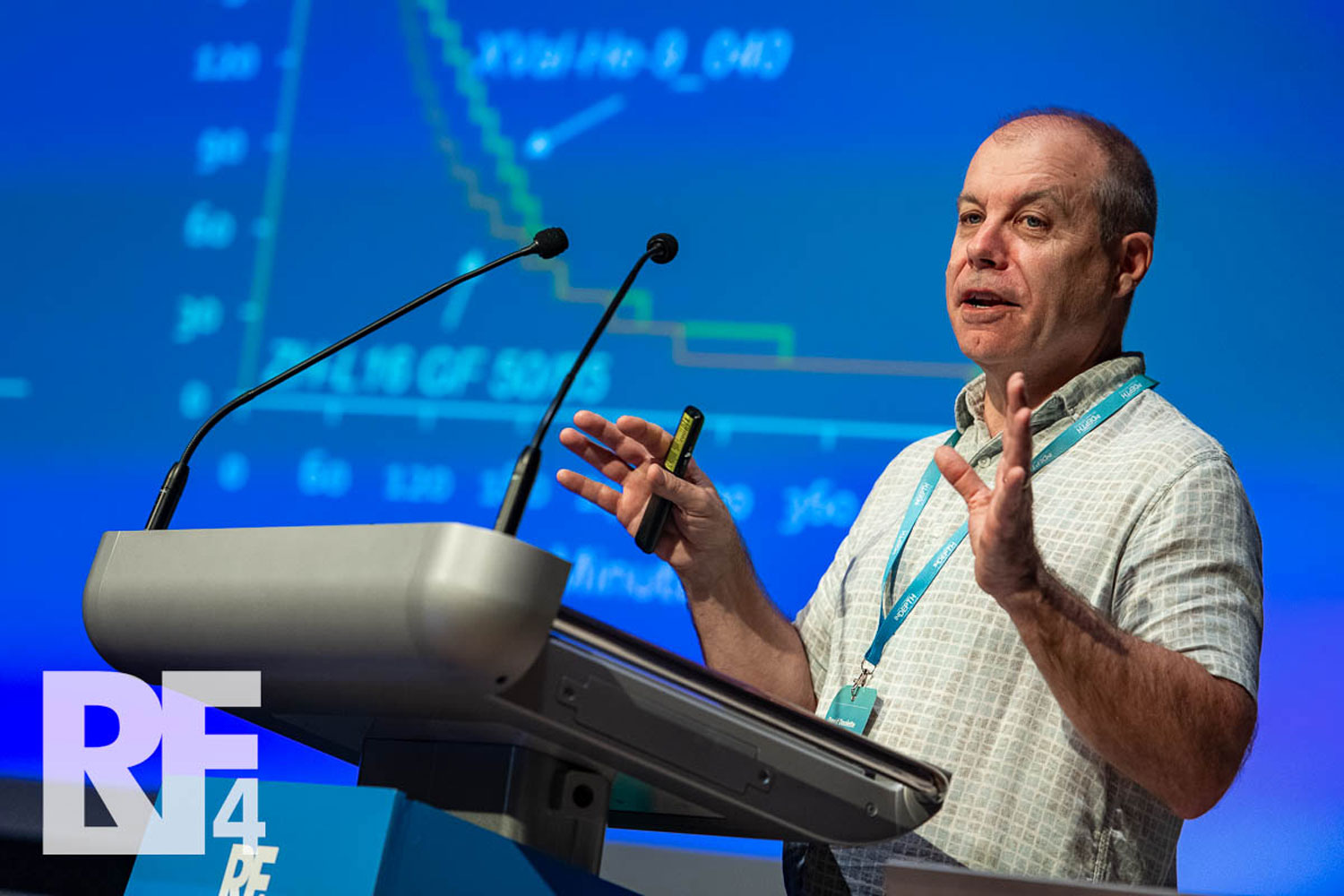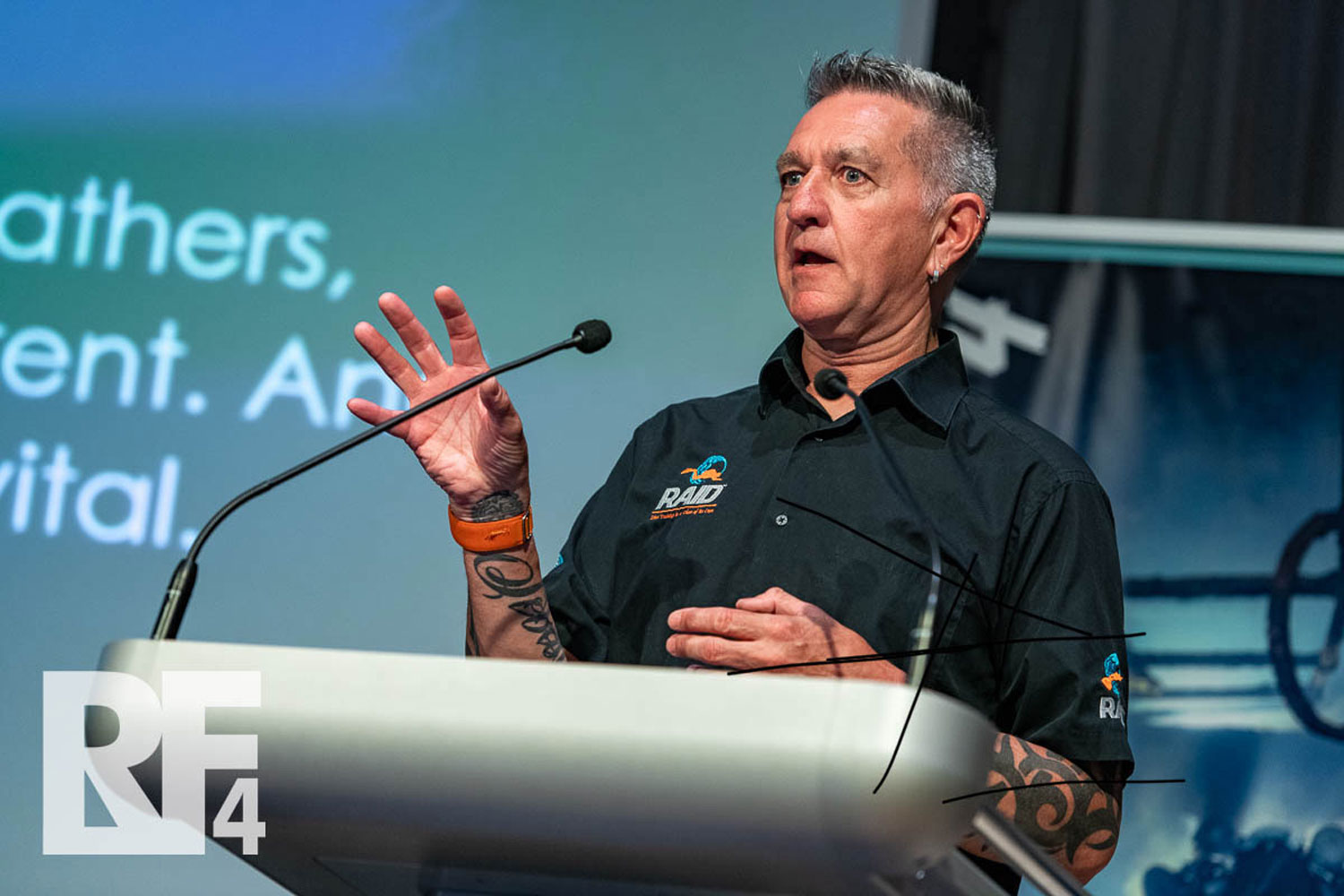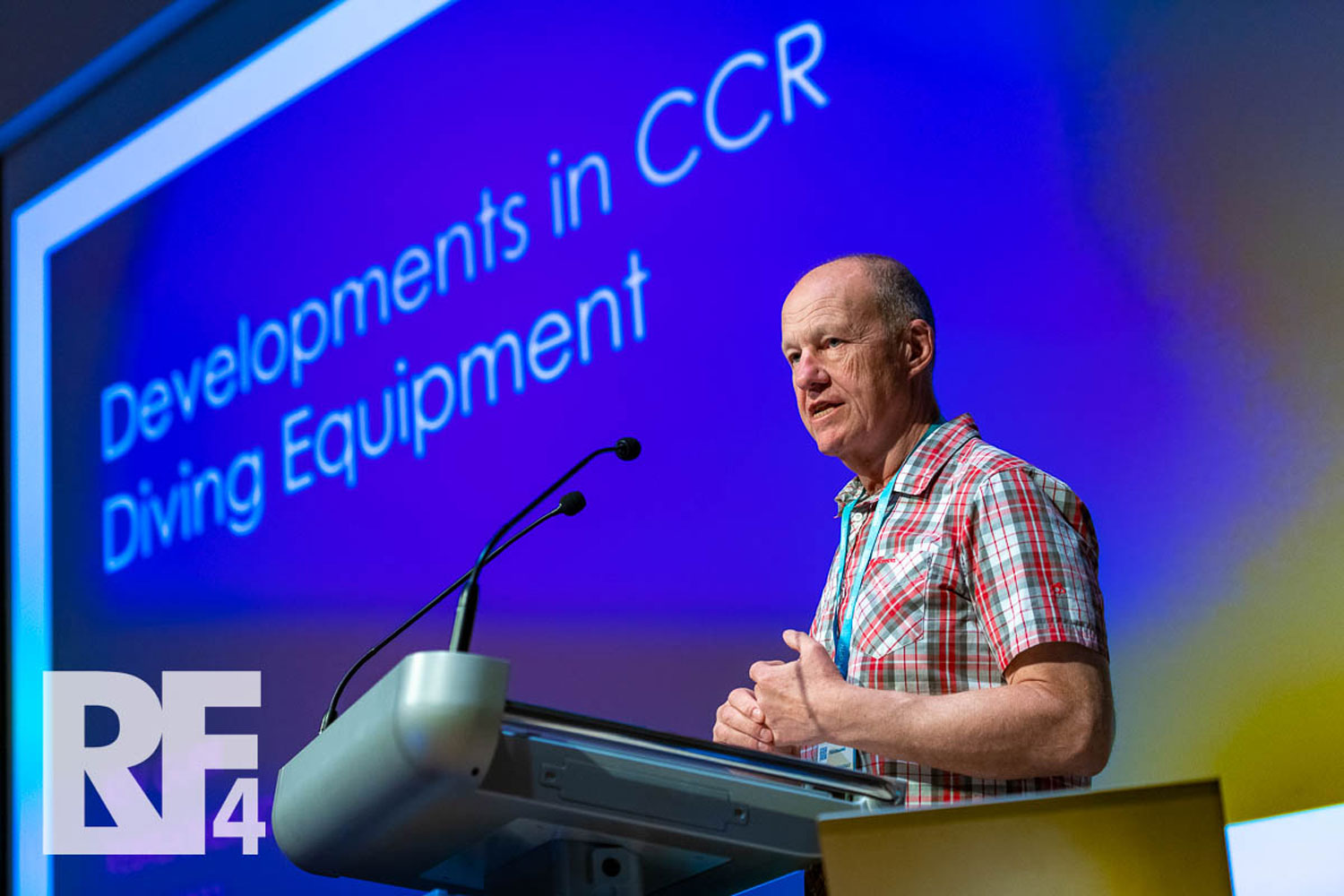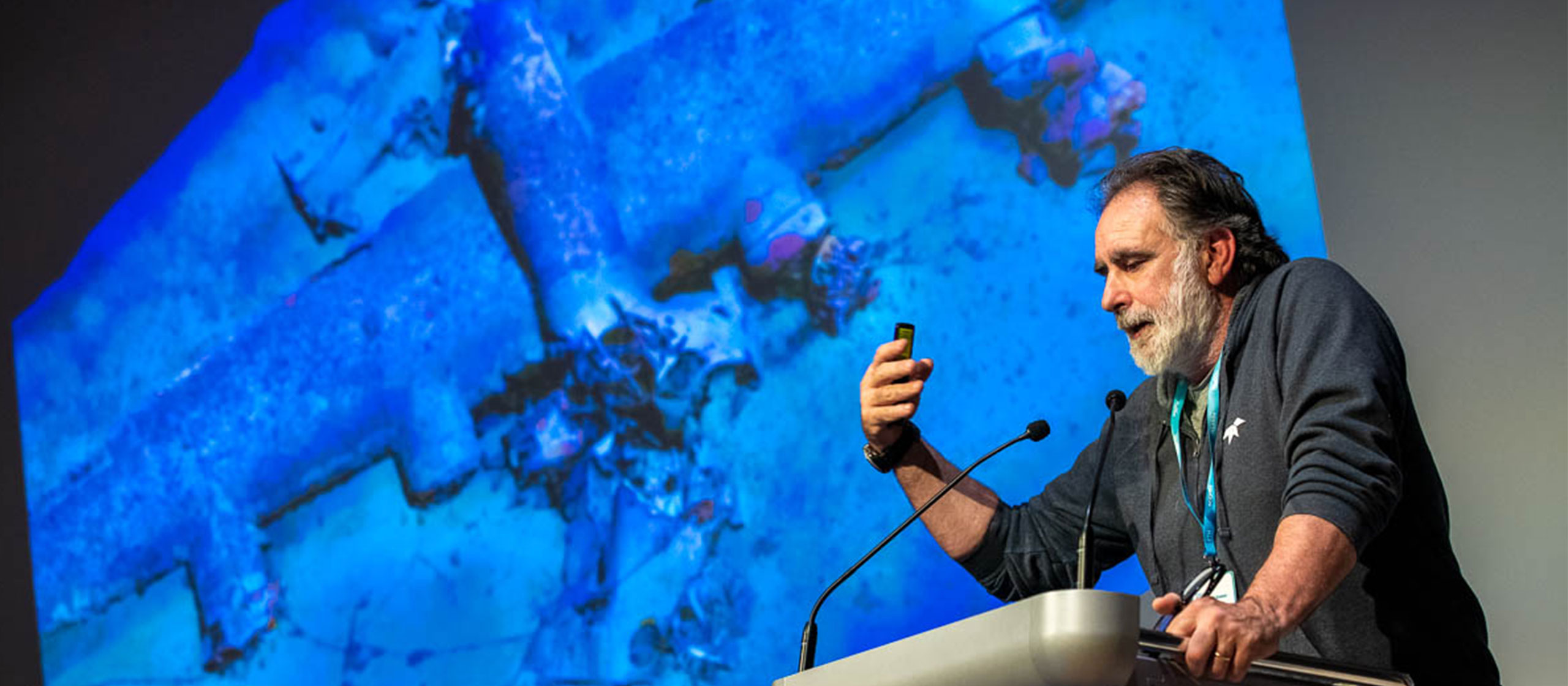Diving inspiration
What You Missed from Day Two of Rebreather Forum 4
The much-awaited first presentation in the morning was given by David Doolette on Advances in Decompression Theory and Practice. A very large subject area, he decided to limit the scope of his lecture on advances since the last Rebreather Forum in 2013, focusing on four key topics: the role of biomonitoring for venous gas emboli (VGE) and heart rate variability (HRV) in decompression planning, inner ear decompression sickness (IEDCS) and its causes, and alternative decompression strategies for deep and technical dives.
With regards to VGE, Doolette explained that VGE measurements using doppler echocardiography are a very useful tool in statistical assessments of decompression stress. However, the high variability of VGE, both between divers and even between individual dives by the same diver, made it a weak predictor for DCS in an individual. He concluded that the use of VGE in biometrics-based decompression planning is therefore limited, at least for the time being. HRV on the other hand is a relatively new and very interesting field of research. However, Doolette said, the lack of evidence supporting a connection between HRV and DCS made decompression planning based on HRV a project with a relatively long timeline, provided that a connection between the two can be found.

IEDCS is a very serious expression of decompression sickness, but extremely rare in dives to less than 100 meters of depth – a type of dive that is of little relevance for the diving community at large, but highly relevant to many attendees of the forum. Doolette explained that the scientific understanding of the causes of IEDCS had shifted away from isobaric counterdiffusion (i.e. the simultaneous on-gassing of one inert gas and off-gassing of another) and toward a right-left shunt (RLS) in the diver’s heart. [note: A persistent foramen ovale (PFO) is one way a RLS can occur, but not the only way.] With regard to decompression strategies for dives with very high inert-gas exposure, either due to depth (wreck) or duration (cave), Doolette emphasized that existing decompression models are not very well validated such dives and proposed the Thalmann algorithm as an alternative approach.
The next presentation by Mark Caney (PADI), Sean Harrison (TDI), and Paul Toomer (RAID) turned the focus toward teaching rebreather diving. The trio talked about the state of the ongoing ISO standardization of rebreather training and certification levels, the growth of rebreather diving and its drivers (increasingly mature technologies, growing interest in technical diving, and the price of helium), the role of manufacturers in the approval of instructors for their units, and what it takes for a dive center to become rebreather friendly.

After a short break, renowned rebreather technology developer Kevin Gurr talked about current developments in rebreather equipment. His opening statement was that rebreather-related R&D, after having been driven by the civilian market for the past couple of decades, had shifted back to the military. He then presented a futuristic array of devices that showed the evolution of comprehensive systems that integrate a rebreather, biometric monitoring of the diver, and a vehicle (from scooters to what are essentially miniature submarines for special forces called diver insertion vehicles) into one unit. It is doubtful that the civilian market will ever see even a fraction of the technologies presented by Gurr, but it was fascinating to catch a glimpse of what diving can (also) be.

The next speaker, Simon Mitchell, is well known in the technical diving community as an outstanding communicator of dive science to a wider audience. His presentation today was titled Developments in CO2 monitoring. Because of its direct harmful effects and its tendency to amplify both oxygen toxicity and narcosis, CO2 is a common enemy of all divers. Rebreather divers rely on a chemical scrubber to remove CO2 from their breathing loop, and scrubber failure is one of the most dangerous problems that can affect a CCR diver. As a result, CO2 monitoring in the breathing loop is something that everybody would like to have, some manufacturers have tried, but none have achieved to implement, at least not satisfactorily.

Mitchell however started off by raising awareness for a less discussed problem related to CO2 that is of great interest not only to rebreather divers: the mechanics of the CO2 exchange in the human body, the role of breathing, and the tendency of some divers to develop a high tolerance for CO2 and a resulting tendency to retain high levels of this toxic gas in their bloodstream. From there, he developed a specification of the requirements for a truly meaningful future system for monitoring CO2 in a rebreather.
After the lunch break, things got technical again: John Clarke, the former science director of the US Navy Experimental Diving Unit, delivered a presentation on the detailed workings of scrubbers and the various conditions affecting these essential components of any rebreather, covering subjects like grain size variation and its impact on scrubber effectiveness and work of breathing, cold, variation between individual divers, and the effect of rate of CO2 ingress on the ability of a scrubber to output CO2-free gas. His recently released book, Breakthrough: Revealing the Secrets of Rebreather Scrubber Canisters was lauded by several other speakers at the forum as a must read for any serious rebreather diver.

The second presentation of the afternoon was given by expedition leader and overall diving legend Richie Kohler, who shared his knowledge of emergency procedures for demanding dive operations, following the four stages of disaster management: mitigation, preparedness, response, and recovery. He presented several example cases of emergencies, including one where he himself had a close brush with what could easily have been a fatal accident.
Next up, Neal Pollock gave a talk about thermal insulation, another topic of high interest for an audience of divers who frequently do long dives in cold water. Pollock emphasized that the primary goals of thermal insulation should be diver performance and optimal decompression, with comfort as a distant third. With regard to the increasingly popular heating systems for exposure suits, he emphasized the dangers of starting a dive warm and ending it cold, presenting research data from a US NEDU study that showed a rather extreme difference in DCS incidence between dives that started warm and ended cold vs. the opposite. Folks, if you own a heating system, save it for your deco.

The final presentation of the day was a special highlight. Timmy Gambin is an Associate Professor of Maritime Archaeology in the Department of Classics and Archaeology at the University of Malta who leads a project for the excavation of an ancient Phoenician shipwreck that sits at a depth of 110 meters off the coast of Malta. After the discovery and initial exploration of the site with remote operated vehicles (ROV), it was clear that this was an extraordinary find. The only question was how to perform the excavation at such a great depth. The solution involves a surface-powered hydraulic suction device and three teams of rebreather divers who work in shifts of 12 minutes, followed by decompression. Gamlin describes himself as a “teacher who happens to be a rebreather diver”, and to do what he and his team from all over the world are doing, one has to be excellent at both. A number of Gamlin’s graduate students served as volunteers during the conference, helping with the innumerable tasks that are required to make an event such as this go smoothly. The long applause at the end of Gamlin’s presentation is theirs as well.
For those who are interested in the Phoenician shipwreck and other underwater archeological sites off the coast of Malta, the Virtual Underwater Museum is more than worth a visit.

About the author
Tim Blömeke teaches technical and recreational diving in Taiwan and the Philippines. He is also a freelance writer and translator, as well as a member of the editorial team of Alert Diver. For questions, comments, and inquiries, you can contact him via his blog page or on Instagram.


